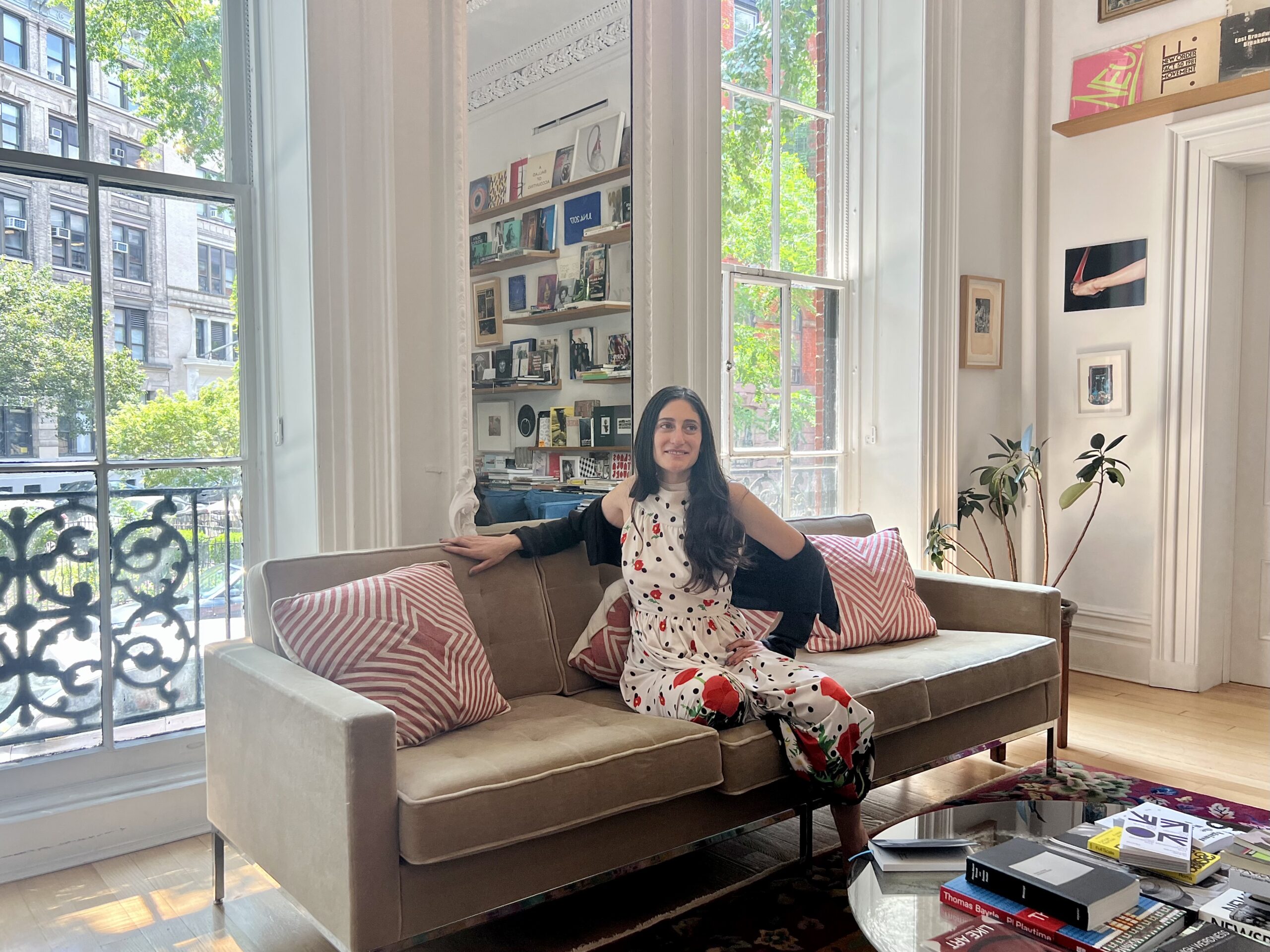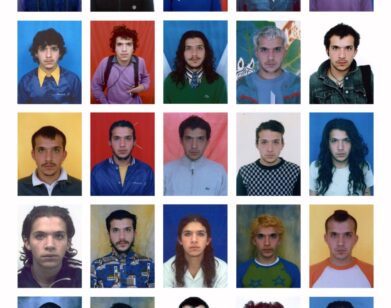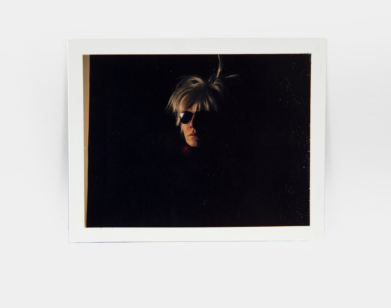IT GIRL
Arden Wohl Looks Back on the Glory Days of the Downtown Scene
During her sophomore year at NYU in 2003, Arden Wohl was invited to attend the New Museum Gala by her then-boyfriend. She was unfamiliar with the event (“I didn’t know much about anything,” she told me). But ultimately, she agreed to go, a wise decision that launched her into the pages of New York Magazine’s voguish gossip column Party Lines. Before the days of social media, the press became justifiably enamored with Wohl and her whereabouts. She directed experimental films and wore bejeweled headbands across her forehead. She frequented New York’s hottest clubs and looked aspirationally chic while doing so. She wrote poetry, baked pastries, designed a vegan shoe line. She was an “it girl” through and through, before the term entered the popular lexicon.
Wohl, now 40, has recently embarked on perhaps her most significant project yet, curating a two-part exhibition of art and poetry, A Study in Form, at downtown gallery James Fuentes. “Though predominantly a collection of visual art,” she writes, “this exhibition beats with the heart of a poet.” Shortly after its opening, I caught up with Wohl in her East Village townhouse to discuss her curatorial debut, the increasingly diffuse nature of the art market, and whether or not a “scene” can still exist today.
———
ALEX LEAV: So, we were supposed to meet at noon today. I woke up this morning to a text from you saying, “Can we push to later in the afternoon haha,” and my first thought was, “Wow, what cool thing was she doing last night?”
ARDEN WOHL: [Laughs] Oh my god, I was not out. I was awake because my 4-year-old son woke me up because he was having a bad dream. I hope I didn’t wake you! Most people sleep with their phone on silent nowadays, don’t they?
LEAV: Oh, yeah, you didn’t wake me.
WOHL: Ok, good. I figure the rule of thumb is that you can’t call someone in the middle of the night, but you can text. Although I don’t know if I have the best social graces.
LEAV: So, you weren’t out clubbing. Are your nights out on the town over?
WOHL: Oh, so over. I wish they’d come back, maybe one day. I think it’s so important to go out, to engage with the city and its people and have new experiences. To see what subcultures are happening and where movements are going. I go out less now because I have a kid. I have to wake up early and take care of him. I can’t be hungover in the morning! I’m accountable in a different way than I was in my twenties. I was living a pretty wild life in my twenties!
LEAV: I know, I want to get into that part of your life a bit because it seems like your experiences then, engaging with the avant-garde downtown scene in New York, have led you to where you are now, as a curator.
WOHL: That time did shape me in ways. I’ve had many, many interesting experiences.
LEAV: How did you initially get involved in that scene?
WOHL: Well, I was very fortunate growing up, but lived a rather sheltered and insular lifestyle. I frequented the Breuer building, which used to be the Whitney Museum. I was deeply inspired by the art there. I remember being enchanted by Matthew Barney’s video installations and Bruce Nauman’s work. There was a store in the basement of the museum, too, where I’d sift through loads of books and tapes. The museum really broke my mind open to seek something greater than what seemed mapped out for me. So, when I was 18, I decided to go to school at NYU and I moved downtown. And that’s where it all started. That’s when I met everyone. Actually, many of the artists in the James Fuentes show are people that I’ve known since I was 19. I also met James Fuentes himself when I was 19.
LEAV: When you say “everyone,” who do you mean? Everyone who’s anyone?
WOHL: Perhaps! [Laughs] No, I’m kidding. People I was friends with and am still friends with. Nightlife was how you met people. Bars, clubs, events at institutions. I don’t know, how do people meet one another now? On the internet at 11am?
LEAV: Unfortunately.
WOHL: Yeah, I guess it’s easier now. I did a lot of legwork then.
LEAV: How would you describe yourself at that time?
WOHL: Very free. Wild. Not wild in a dangerous way, though. I was never super into drugs. I was always around it, but I was never wild in that way. I said no to drugs but said yes to mostly everything else! I just wanted to meet as many people as I could and engage with the world. I’m still like that. I’ve always been that way, like an octopus. And it’s not that I want to take things from people. I think there’s an altruism to the energy that I have. I’m not trying to steal; I’m just interested in people in general, in learning. Maybe that’s why I’ve done a lot of different things in my life. I’ve pursued a lot of different professional endeavors throughout my 40 years on Earth.
LEAV: Did you consider yourself an “it girl” then?
WOHL: Well, I don’t know. I knew I was in a scene, but there are a lot of scenes. I think I knew when the press took an interest in me and wrote about me.
LEAV: Do you remember the first time you were covered?
WOHL: Of course. Very early twenties, 20 or 21. I was a sophomore in college. Jada Yuan, who is now a serious political journalist for The Washington Post, had a column in New York Magazine called “Party Lines.” I read it all the time. It’d basically chronicle New York nightlife, who was out at night and where. It’d feature David Byrne, for example, people who were known as interesting cultural figures. And I remember being really young and my boyfriend at the time inviting me to the New Museum, which I had never heard of, for a gala. Of course, I said yes. My friend Tara threw me in a dress of hers. She had a brand called Imitation of Christ. The dress had a hood and sparkles. Great dress, I still have it. Anyway, off I went to the New Museum gala. I didn’t even know what it was. I didn’t know much about anything. A day or so later, my mom was showing me a photo of myself taken at the gala in Party Lines. In that moment, I was like, “Oh, I guess they liked the dress,” and maybe that was it. It’s like a two-second thing. You’re in the right place at the right time. I don’t think you can create that. Maybe now with Instagram, young girls have agency and can create it, but I don’t know. Doesn’t it have to be public opinion in some ways?
LEAV: I think so, yeah. Perhaps some of the ones who create it on Instagram are initially seeking the approval of public opinion, whereas you weren’t.
WOHL: I wasn’t! It just happened.
LEAV: There was obviously something about you that interested people. What do you think that was?
WOHL: I don’t really know. Maybe I was just the Jewish one. The one who had brown hair and hadn’t gotten a nose job, a little different from the rest. I was free-spirited. People are interested by people who might not want to live the life that had been prescribed.
LEAV: I think rejecting the norm is a theme in A Study in Form.
WOHL: It is. That is the ethos of poetry. As I wrote in the exhibition text, the show is mostly visual art but it “beats with the heart of a poet.”
LEAV: This is the first gallery show you’ve curated, right?
WOHL: Yes!
LEAV: Congratulations.
WOHL: Thank you, I’m very proud of the show. I had the best time working on it and I’m so honored and excited that James trusted me and that all these great artists trusted me.
LEAV: It makes so much sense to me for “curator” to be added to the long list of your professional endeavors.
WOHL: Wow, I’m so happy you feel that way. The point was to fuse. Visual art and poetry are equally as valuable, right? The intersection is important to explore.
LEAV: Yeah, I feel like usually when poetry or written text is part of a show, it accompanies the show. An exhibition text or essay or catalogue. But in A Study in Form, the poetry and the visual art are on an equal playing field. There was no hierarchy, one wasn’t more important than the other.
WOHL: Yes, the same goes for performance art. The question is, how do we make non physical objects last? These things are so important and we need to make them last. We make things in many forms because we’re trying to understand the here and now and to record our time. These creations, no matter what form they take, will eventually be the relics that aliens will study to help them in understanding what humanity was.
LEAV: I like that way of looking at it.
WOHL: I just think that later we’ll want to have, and need to have, an insight into humanity’s ideas and what was happening in the world around us. In 500 years time, they’ll wonder: what was happening? What was life like then? Even that “it girl” article you mentioned earlier. That article will give insight into, you know, what the collective idea was, what the social constructs were.
LEAV: The show records the relationship between the artist and the world around them, but also the current state of the art market.
WOHL: Yeah, I think it deals with people making art that they think is going to fit into the market, or what’s going to sell. Oil on linen is sort of what the market wants right now, which is great. I mean, I’d take a Mary Cassatt painting any day! But there’s a disparity between how you can make a living as a visual artist and how you can make a living as a poet. Think about how easy it is to sell a painting today. A gallery can sell an artist’s work by sending a PDF to a collector. Like, some guy on his jet ski in the Mediterranean is skimming the PDF on his waterproof phone saying “Okay, I’m going to buy this Richter.” Like, you can’t even see the painting! It’s a tiny rectangle on a PDF!
LEAV: And the show isn’t going to change or fix that, but it’ll make you think about it.
WOHL: Right. That was the goal.
LEAV: The second part of the exhibition opens in early 2024?
WOHL: Yes, I’m really excited about the Chapter Two. It’s going to happen at James Fuentes in early 2024. It’s going to be at the new Tribeca space.
LEAV: Exciting. Will the format of the show be the same?
WOHL: It’ll be a continuation of Chapter One. The most amazing thing is happening, though. I won’t say who it is yet, but there’s an amazing painter who does traditional figurative painting. They’re going to make a painting from a poem. They’re going to work on the piece in their studio and it’ll be included in the show. They’re creating a painting from another poet’s writing, which is exciting. There will also be a book coming out, which will encompass both chapters.
LEAV: In the exhibition essay, you mention the “scene.” You define it as a “conceptual place where a group fosters collective boldness in stepping outside of accepted convention.” I started thinking of various creative “scenes” throughout history, like the Cedar Tavern, for example.
WOHL: Or like, Max’s Kansas City.
LEAV: Exactly, and you were part of a similar scene during the 2000s. Does a scene like that exist now?
WOHL: I feel like it does! It always exists.
LEAV: Where? Asking for a friend.
WOHL: [Laughs] There’s not one place, but it’s happening. I think it’s kind of happening at the Poetry Project. The Poetry Project is a space on St. Marks that holds live poetry readings and performances. I love it. I think Kyle Dacuyan, who’s the executive director and has done such an amazing job of bridging generations. I feel like that’s a place that’s so inspiring to me right now. I think people are reconnecting with their bodies there. They put down their phones. There are college students and 80-year-old artists in the same space, listening to poetry. Oh, also Nublu. People are loving Nublu.
LEAV: See, you’re still out on the town.
WOHL: Sure, in bed by 9pm, but still out on the town!






